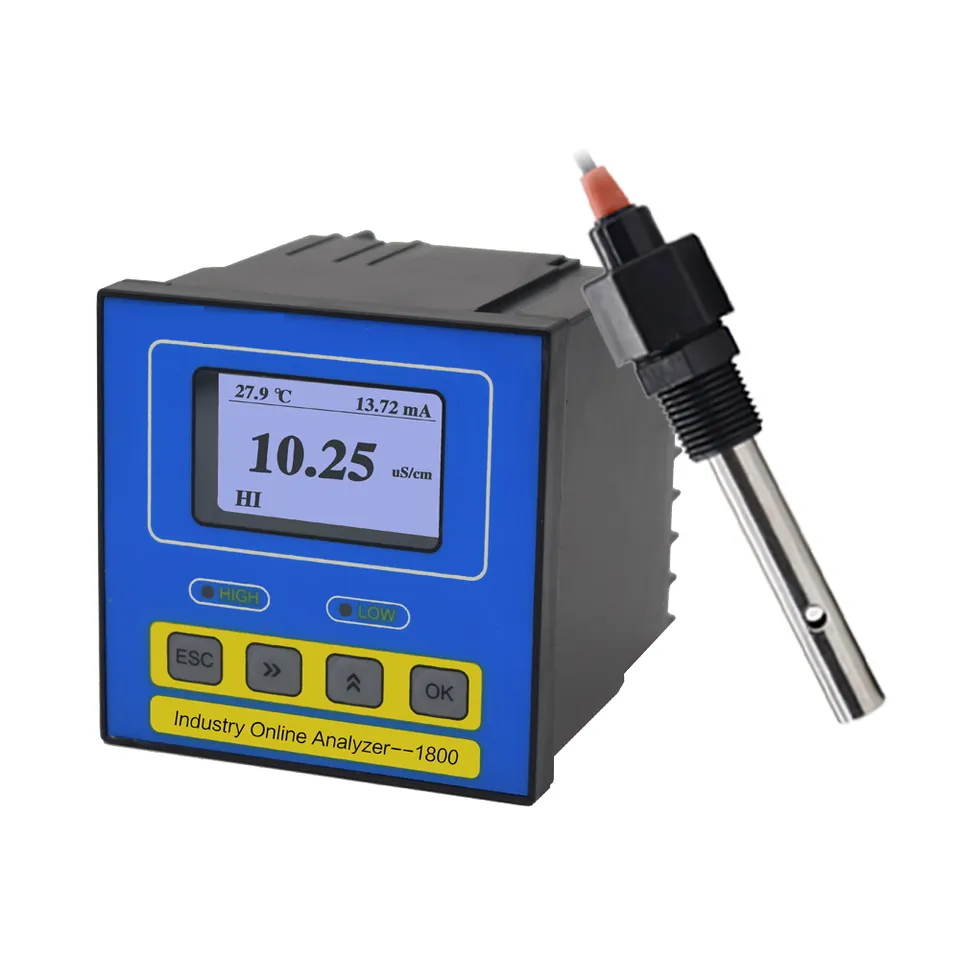目录
水质评价方法
水质评估对于确保人类和环境的安全与健康至关重要。用于评估水质的方法有很多种,每种方法都可以为污染物的存在和水体的整体状况提供有价值的见解。在本文中,我们将探讨一些用于评估水质的常用方法。
用于评估水质的基本参数之一是物理特性的测量。温度、浊度、颜色和气味等物理参数可以提供有关水的整体状况的重要信息。例如,高浊度水平可能表明水中存在悬浮固体或污染物,而异常的颜色或气味可能表明存在污染。
化学分析是评估水质的另一种关键方法。这涉及测试水样中是否存在各种化学物质,例如重金属、营养素、农药和有机化合物。通过分析水的化学成分,科学家可以确定污染物的含量并评估对人类健康和水生生态系统的潜在风险。

生物评估也常用于评估水质。大型无脊椎动物、藻类和鱼类等生物指标可以提供有关水体生态健康的宝贵信息。这些生物体的丰度和多样性的变化可以表明水生环境的污染水平和整体健康状况。
微生物分析对于评估细菌、病毒和寄生虫等微生物污染物的水质至关重要。监测粪大肠菌群、大肠杆菌和其他病原体的存在对于确保饮用水、游泳和其他娱乐活动的水安全至关重要。
除了这些直接的水质评估方法之外,遥感技术也越来越多地使用用于远距离监测水体。遥感技术可以提供大面积温度、浊度和叶绿素浓度等水质参数的宝贵信息,从而实现高效且经济高效的水资源监测。
| 型号 | pH/ORP-1800 pH/ORP计 |
| 范围 | 0-14; -1600-+1600mV |
| 准确度 | ±0.1pH; ±2mV |
| Temp. Comp. | Manual/Automatic temperature compensation; No Comp. |
| Oper. Temp. | Normal 0~50℃; High temp 0~100℃ |
| Sensor | pH double/triple sensor; ORP sensor |
| Display | 128*64 LCD Screen |
| Communication | 4-20mA output/RS485 |
| Output | High/Low limit dual relay control |
| Power | AC 220V±10% 50/60Hz or AC 110V±10% 50/60Hz or DC24V/0.5A |
| Working Environment | Ambient temperature:0~50℃ |
| Relative humidity≤85% | |
| Dimensions | 96×96×100mm(H×W×L) |
| Hole Size | 92×92mm(H×W) |
| Installation Mode | Embedded |
It is important to note that water quality assessment is a complex and multidisciplinary field that requires the integration of various methods and approaches. By combining physical, chemical, biological, and microbiological analyses, scientists can obtain a comprehensive understanding of water quality and make informed decisions regarding water management and conservation.
In conclusion, assessing water quality is essential for protecting human health and the environment. By using a combination of physical, chemical, biological, microbiological, and remote sensing methods, scientists can gather valuable data on water quality parameters and ensure the sustainable use of this vital resource.

